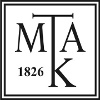Adamecz, Dóra Izabella and Veres, Éva and Papp, Csaba Gergő and Árva, Hédi and Rónavári, Andrea and Marton, Annamária and Vizler, Csaba and Gácser, Attila and Kónya, Zoltán and Igaz, Nóra and Csontné Kiricsi, Mónika (2025) Gold and Silver Nanoparticles Efficiently Modulate the Crosstalk Between Macrophages and Cancer Cells. INTERNATIONAL JOURNAL OF NANOMEDICINE, 20. pp. 4777-4802. ISSN 1176-9114
|
Text
AdameczIntJNanomedicine2025-508171-gold-and-silver-nanoparticles-efficiently-modulate-the-cross.pdf - Published Version Available under License Creative Commons Attribution Non-commercial. Download (13MB) | Preview |
Abstract
Background: Macrophages, polarized into pro-inflammatory M1 or anti-inflammatory M2 states, are essential cellular elements of innate immunity. In the tumor microenvironment, owing to a paracrine manipulative program by cancerous cells, tumor-associated macrophages (TAMs) evolve, which can shift between M1-like and M2-like phenotypes. Since it is fairly unknown how the promising anticancer agents, silver (AgNPs) and gold nanoparticles (AuNPs) affect the bidirectional communication and reprogramming in the tumor stroma, we examined the behavior, the tumor-supporting functions, and the expression of polarization and functional marker genes of TAMs to reveal how these are modulated upon interaction with nanoparticle-exposed cancer cells. Methods: We established co-cultures of murine immortalized J774 or primary bone marrow-derived macrophages with 4T1 breast cancer cells treated with AuNPs or AgNPs or with none of the nanoparticles. We assessed the expression of macrophage polarization and functional markers using RT-qPCR and Proteome Profiler Array and evaluated macrophage migration and matrix metalloproteinase activity by specific assays. Results: Protein and mRNA levels of most examined factors – except tumor necrosis factor-alpha – such as C-C-motif chemokine ligands 2 and 22, interleukin-23, inducible nitric oxide synthase, cyclooxygenase-2, the macrophage mannose receptor CD206, transforming growth factor-beta, and chitinase-like-3 protein decreased, and the expression of polarization markers revealed a shift towards M1-like phenotype in macrophages co-cultured with AgNP- or AuNP-treated 4T1 cells. Both nanoparticle treatments reduced the levels and activity of cell migration-related factors, such as C-C motif chemokine ligand 3, matrix metalloproteinases, and suppressed macrophage migration. Conclusion: Both AuNPs and AgNPs showed a remarkable ability to influence macrophage-cancer cell communication, suppressed indirectly M2-like TAM polarization, and perturbed the migration behavior of TAMs that is critical for tumor invasion, indicating modulated immunological functions and debilitated cancer-promoting capabilities of TAMs in this microenvironment.
| Item Type: | Article |
|---|---|
| Uncontrolled Keywords: | metal nanoparticles, tumor microenvironment, tumor-associated macrophage, macrophage-tumor cell co-culture, paracrine |
| Subjects: | R Medicine / orvostudomány > R1 Medicine (General) / orvostudomány általában |
| SWORD Depositor: | MTMT SWORD |
| Depositing User: | MTMT SWORD |
| Date Deposited: | 21 May 2025 11:10 |
| Last Modified: | 21 May 2025 11:10 |
| URI: | https://real.mtak.hu/id/eprint/219170 |
Actions (login required)
 |
Edit Item |



